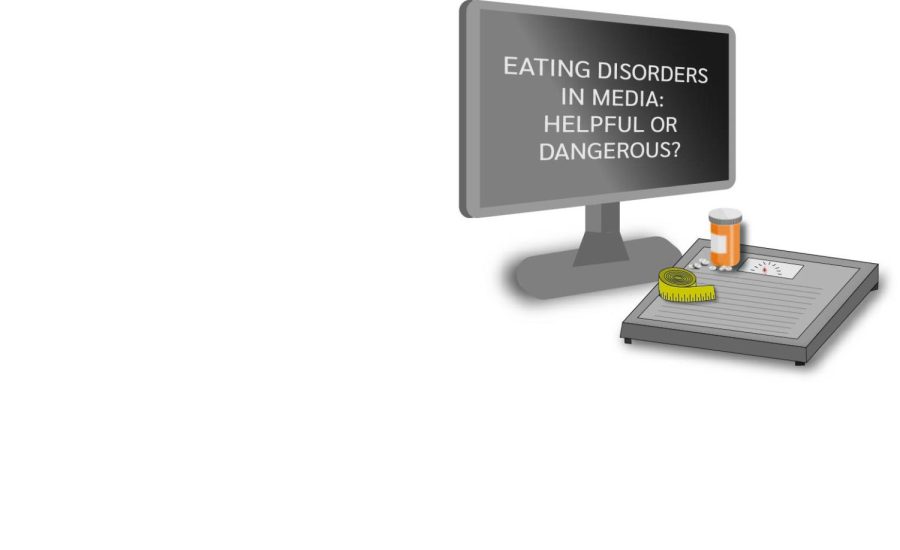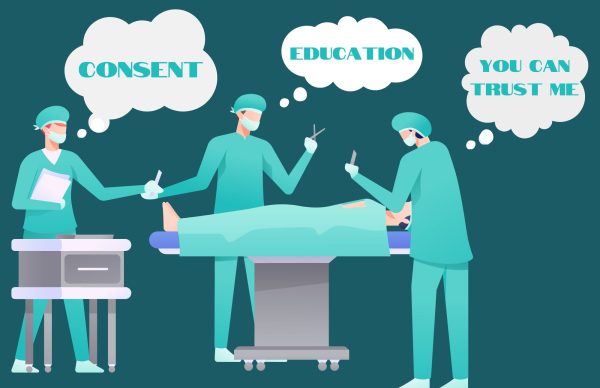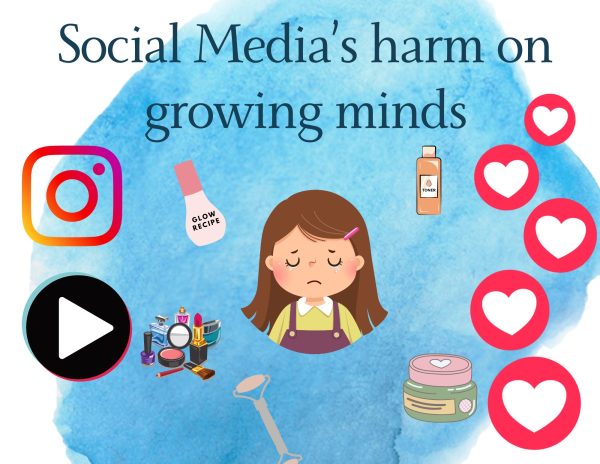Eating disorder “representation:” how helpful is it really?
Does the media’s portrayal of eating disorders help or hinder the cause of ending the disease.
March 1, 2023
Trigger Warnings: Mentions of eating disorders, miscarriages
No matter how discouraged eating disorders may seem by society, it’s difficult to think of any other mental illness that is more glamorized in recent culture.
Disordered eating affects all types of people, but those aged 12 through 25 years are most likely to experience a diagnosis. Furthermore, 8.4 percent of women and 2.2 percent of men are estimated to experience some form of an eating disorder in their life.
The most targeted community is arguably teenage girls and young women. The desire to be thin, dainty and eat as little as possible is a standard that every girl knows and has likely experienced firsthand; whether it be from social media, celebrities portrayed on television, or even personal friends, women are set up to become both vulnerable and insecure when it comes to their weight and eating habits.
The number of girls between the ages of 15 to 19 who have eating disorders – specifically anorexia – has increased every 10 years since 1930. Social media users and news outlets acknowledging the problems that disordered eating causes – especially after decades of the topic being ignored – certainly lead to positive discussions about illnesses like anorexia and bulimia. But, unfortunately, these conversations can also have the unintended consequence of impressing upon young girls images of bodies they’ve been trained to look like, resulting in their development of an eating disorder.
We need to stop the stigma that eating disorders are something to be proud of and flaunted.
In 2017, Netflix released a movie titled “To The Bone.” The film stars Lily Collins as a young woman named Ellen who is sent to a treatment center after her case of anorexia nervosa becomes extremely dangerous. While watching this movie, I can reluctantly admit that even after the graphic images of her exposed rib cages, sunken cheekbones, dulled eyes and gray skin, I found a desire to look like her. It took me a while to come to terms with this fact, but it also made me wonder: how many other teenage girls watched that movie and thought the same thing?
The film showed scenes of Collins’ character’s poking bones, thigh gaps and impossibly thin wrists — but these features are considered desirable to many of those who struggle with disordered eating, especially anorexia. Personally, the movie’s attempt at de-glamorization of eating disorders did exactly the opposite: I felt encouraged to replicate those attributes. Aside from one scene of a miscarriage that was never quite elaborated, it fails to address the more “taboo” consequences: delayed puberty, osteoporosis, severe organ damage, infertility and countless other life-threatening symptoms that eating disorders cause.
“To The Bone” is just one example out of thousands that influence people daily. With the knowledge that eating disorders have risen by 119 percent in children under the age of 12, it’s easy to pinpoint one of the leading reasons: social media. Apps such as Tumblr and TikTok feed their users images that are clearly tied to eating disorders, hidden behind the guise of being “aesthetic.” Misrepresentation in the media causes the idealization of unhealthily thin bodies and stigmas that are linked directly to the staggering statistics we see today.
I’m not saying that eating disorders should no longer be discussed or represented in the media, but it’s important that this topic is handled with extreme delicacy and in ways that are less likely to glamorize it, however unintentionally. A movie presenting its viewers with jarring scenes detailing methods of burning calories, hiding food and stashing diet pills do nothing to help victims of this illness.
With late February to early March being Eating Disorder Awareness Week (EDAW), it is up to us to be conscious of the way we handle disordered eating and the discourse surrounding it. We need to stop the stigma that eating disorders are something to be proud of and flaunted. Instead of movies and social media posts participating in the stigma of it — unknowingly or not — there needs to be more recognition for the harsh, ugly sides of such a dangerous illness that so many ignore in favor of the “beauty” aspects that disordered eating accomplishes.
If you feel that you may be affected by disordered eating or know someone who is, there are resources available. Visit the Eating Disorders Helpline or talk to a trusted adult or counselor. You are not alone.
















Gaby • Mar 2, 2023 at 8:50 am
Amazing article, I learned so much!!